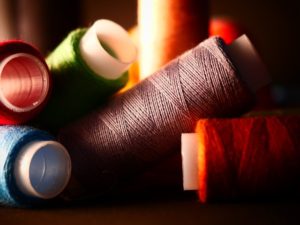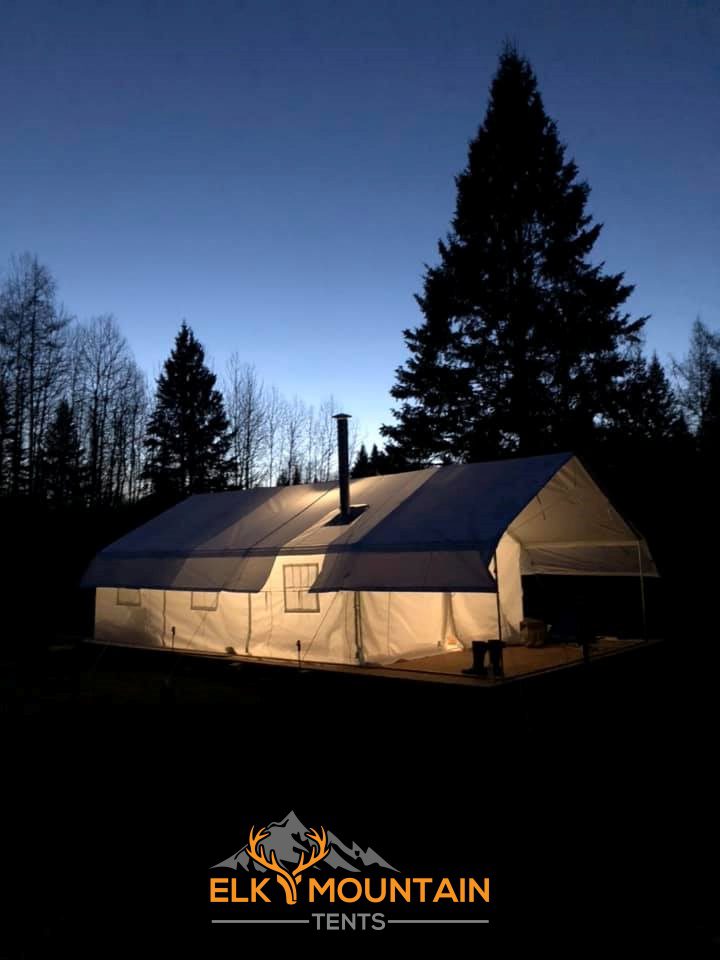 Nylon vs. Polyester vs Cotton Tents: What’s the Difference?
Nylon vs. Polyester vs Cotton Tents: What’s the Difference?
Tents can be made from all kinds of materials, whether they be natural like cotton, or man-made. While cotton easily stands out from other tent fabrics, it can be difficult to know the difference between all the synthetic options out there, and which ones are better in the long run. The two most common synthetic tent materials are nylon and polyester, and if you are looking to buy a new tent, most of your options will be made of one of these. You may have questions like, “What is the difference between these two materials?”, “What are the advantages and disadvantages of both?”, and “Which kind would be best for me?”. Well, let’s dive in and find out!
Nylon Tents
Let’s have a look at the advantages of nylon first. A few of the biggest reasons nylon is so commonly used in making tents include that it’s much less expensive than other materials, has excellent abrasion resistance, and is remarkably light considering its strength (The ratio of strength-to-weight is significantly better than polyester or cotton). For this reason it’s almost exclusively used in lightweight backpacking tents.
What makes nylon strong is its ability to stretch, which offers flexibility when the tent is set up, making the tent fabric less likely to tear. The “stretch factor” of nylon does have its downsides, however. Over time, after the fabric has been stretched over and over against where it was woven, it can start to form wrinkles, which take away from the tent’s appearance. Material that doesn’t stretch doesn’t have this issue. Even more stretching and warping can occur when the material gets wet (since it absorbs water), which can limit the lifespan of the tent. Nylon can also only be stretched so much before it does finally break, but a lot of tent brands are now using ripstop nylon to keep this from occurring. Ripstop nylon is especially great for backpacking, as you can hike throughout the day and set up your tent without worrying about it being ruined in the middle of the trip (and you’ll have the lightest and most easily transportable material available).

When it comes to synthetic fabrics, you typically won’t find a more abrasion-resistant material than nylon. This simply means that it manages to retain its structural integrity over time (aside from the wrinkles that form), not wearing out like most other materials tend to do. This is especially useful regarding places where the poles meet the tent as well as the tent floor. In many fabrics, these areas will begin to wear out and weaken until they tear, but nylon manages to avoid this issue.
Nylon is fairly breathable and is hydrophilic, which essentially means that water vapor can pass through more easily. Polyester can achieve a similar breathability depending on how it is manufactured. Polyester has a greater variability in its breathability.
Nylon is usually the lightest tent material you can find. This makes it a popular option for backpackers and minimalist campers. Nylon tents can be especially great for backpacking since the thin material allows them to pack down small and compact, leaving plenty of room in your backpack for all of the other gear you need. It is also the easiest material to maintain, so there isn’t much preparation or maintenance required whenever you set up camp.
One major weakness of nylon is that it is more susceptible to ultraviolet rays than polyester and other materials. This causes the tent to not last quite as long, especially if you plan on using it several weeks out of the year or at high elevations where a high UV index is a factor. This is one of the sacrifices you make when you get a more lightweight fabric, as thinner fabrics are always weaker against UV rays. Some nylon tents do include coatings to lessen the impact of UV rays, making it last a little longer. However, ultraviolet rays will still probably be what keeps the tent from lasting a long time.

Another problem with nylon is that it absorbs water. When nylon gets wet, it will become much heavier and even expand. Cotton has this same issue. Precipitation and high humidity can both pose a problem when you are camping as the moisture can cause the material on the fly to sag. This can lead to you needing to go outside of the tent during the night to tension the fly to prevent this from occurring. There are waterproof coatings that help you avoid this, so if you do expect wet weather when you are camping, be sure to purchase a nylon tent with one of these coatings, and you won’t need to worry. Polyester does not have the same issue as nylon, and it keeps its tension and integrity when it does get wet, rather than sagging. While nylon tends to be able to breathe , it still isn’t the most breathable material out there, so it would help to get a tent with windows or vents to offer decent airflow.
Because of the warping and tearing that occurs when nylon begins to stretch, it usually isn’t the best material for large camping tents, but it is the perfect material when it comes to ultralight tents. Nylon is arguably the best material for any minimalist. It is also great for strong, lightweight tarps.
Polyester Tents
Polyester has its fair share of pros and cons when it comes to tents, so let’s take a look at those.
Like nylon, polyester tents are a much cheaper option than tents made from other materials, so it is also a great budget option to consider when buying a tent. While not as light as nylon, it is still a light fabric when compared to cotton. Polyester typically has a lower tear strength than nylon since it doesn’t stretch, so thicker (and as a result, heavier) polyester is often used to prevent tearing from happening. However, when polyester is thicker it has a better break and tear strength than cotton.
Polyester having less stretch than nylon has its advantages, including that it manages to stay much more stable and pitches better. It will keep its shape over time, even when it gets wet. This makes polyester tents a much more aesthetically pleasing option than nylon. While it doesn’t have the same abrasion resistance that nylon does, it should still be able to last you many years without the fabric tearing on the tent frame. Polyester is naturally more durable than nylon, especially since it is usually thicker and heavier, so you can count on a polyester tent lasting you for a longer amount of time. This material is a lot better to have with you when there is bad weather, rain, or heavy winds, so if you are a 4-season camper, this might be the way to go.
One advantage of polyester is that it is typically more resistant to ultraviolet rays than nylon. The color and thickness of the fabric play a role in this, and since polyester is usually thicker, it can withstand these harmful rays much better.
The material is also more resistant to mold and mildew than other materials, which makes it easy to maintain. It is a synthetic material that microorganisms have zero interest in eating.
While not as lightweight as nylon, it is still significantly lighter than cotton by about 10-20% depending on how strong of a material you want.
These things make polyester a fantastic material for small and large dome tents as well as family camping tents.

Depending on how the polyester fabric is manufactured, breathability can be an issue. The polyester canvas used by Elk Mountain Tents, in contrast, boasts the same breathability as cotton canvas. Either way, when shopping for a polyester or cotton tent, it’s important to get one with screened ridge openings and windows just in case.
While polyester can usually hold up against ultraviolet rays better than nylon can, it is still a good idea to keep it out of the sun wherever possible, as over time you will start to notice damage occurring with any material. The best remedy to ensuring your polyester tent lasts for decades is to get a rain fly.
Ultimately, the thing that makes polyester especially popular and ideal for shelters is its higher resistance to water, rough weather, and UV rays. Nylon is excellent for its flexibility, abrasion resistance, and strength-to-weight ratio. Both nylon and polyester are great cost-effective options to consider when purchasing a tent, and it comes down to personal taste and needs in deciding which one to go with, as quality varies from tent to tent. Some nylon tents are stronger than polyester, and vice versa, so it is a good idea to look at reviews of tents you are considering to know how reliable it will be. Many consider nylon to be a better option for a backpacking adventure since it’s lighter and easier to transport, while polyester makes for a great group and family camping, as well as camping during the colder months of the year.
As the most popular tent materials on the market, nylon and polyester both make up some truly high-quality tents. It is ultimately up to you which one is better for your needs, so take a look at the pros and cons of both. Once you decide you can be well on your way to more great camping adventures!
Sources:
https://www.slingfin.com/blogs/the-beta/tent-fabric-101-nylon-vs-polyester-vs-dyneema-cuben
https://www.intentsoutdoors.co.nz/blogs/news/a-quick-guide-to-the-pros-and-cons-of-tent-fabrics-at-a-tent-sale



